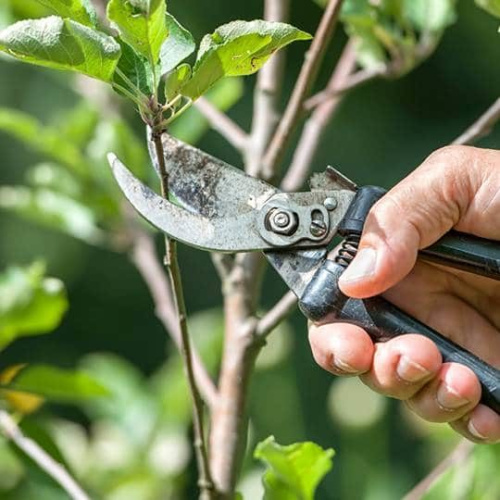*/Emergency Tree Removal on Long Island/*
- November 29, 2022
- Landscapers

Emergency Tree Removal on Long Island NY Considering the risk that hurricanes and floods pose to homes and businesses on Long Island, you need to be prepared. You may not be able to save your home or business if it’s damaged by storms, but you can protect yourself by calling an emergency tree removal service.
You’re on the hook for the cost
Having a tree on your property can be a pain in the neck. Thankfully the city of Long Island is more than willing to oblige a tree-related headache. The thorn in your side can be removed in a flash. The city has a tree and lawn maintenance program to boot. It may be time to call in the professionals. This is a great time to assess the current condition of your landscape before you make the wrong move. The following are some pointers to keep in mind before the big day. It is also a good idea to have a good idea of the area’s zoning laws before you make the next move.
In the spirit of open communication, a little civility goes a long way. In the end, a happy neighbor is all that matters. A well thought out plan will go a long way to improving your quality of life. After all, no one wants to live in a tree house. The best way to achieve this is to make a tree-removal list and enlist the services of a tree care specialist. This should be a no brainer since the tree care specialist will be able to perform a number of other tasks for you. Having a good tree care program in place will reduce the chance of any major disasters.
Diseases
Among the major issues with emergency tree removal on Long Island are diseases. There are diseases that cause trees to die or become weak and fall. They may also cause damage to people or property. It’s important to know the symptoms of tree diseases to be able to call an arborist for help.
One of the most common tree diseases on Long Island is oak wilt. It kills oak trees by producing a gummy-like plug at the root, blocking water from reaching the root system. It also causes the leaves to wilt and drop. It’s spread by wind.
Another disease is the Southern Pine
Beetle. This insect has been a major threat to tree owners since 1996. It’s native to the southeastern United States, but it has now found its way to northern Long Island. It’s caused major impacts in New York City. It also kills all species of Hemlock trees. It’s also possible for other insects to cause tree diseases.
The Asian Long horned Beetle has also been a major problem in NYC. It has caused major impacts in Nassau County. It also causes major impacts in Upstate New York. It has been reported that the infestation has spread into the Central Islip area.
Other fungal leaf diseases are also common on Long Island. They can spread through wind and splashing water. They can also affect shrubs and perennials. They can also cause trees to grow very slowly.
Other than disease, emergency tree removal on Long Island also involves fire and storm damage. Fallen trees can cause damage to electrical wiring and other property. They may also dent a car or outdoor pool equipment. A tree may also fall into a neighbor’s property.
Storms
During the summer months, storms are common on Long Island. Storms can be powerful and cause serious damage. If you have been affected by a storm, emergency tree removal on Long Island is important to your safety.
The National Hurricane Center is naming storms for the first time using the Greek alphabet. This year, the hurricane season is expected to be active. It’s important to be prepared, so check your local weather forecasts to ensure that you are prepared for the storm.
New York State Police is preparing to deploy additional Troopers and specialized vehicles such as four-wheel drive vehicles and Utility Task Vehicles. They have also prepared for storms by testing all emergency power equipment.
NYC Emergency Management
is monitoring the storm’s track and has enhanced field and command center staffing. They are working closely with local communities, elected officials and utility partners to prepare for a potential flash flood. They are also working with the National Weather Service to ensure that their warning messages are effective.
NYC Emergency Management has activated the City’s Flash Flood Emergency Plan. This will allow the City to activate public information officers to keep customers informed. They will post safety messages on social media and train stations. They will also spread salt and clear ice from stairs and signals.
New York Power Authority is preparing for the storm by preparing its facilities and equipment. They have staffed their power restoration crews and have 5,550 workers on standby for restoration efforts. They are also assessing the damage that will be done to the power grid.
New York City is expecting to be at a slight risk of severe weather on Monday. They will also have minor to locally moderate coastal flooding on Sunday through Tuesday.
Floods
During the past few weeks, New York City has seen two major flooding events. The first was caused by Hurricane Ida, which flooded streets and basements across the Northeast. Now, remnants of Ida are causing heavy rain to linger in parts of the city.
NYC Emergency Management issued a flash flood warning on Wednesday, and the National Weather Service issued its first flash flood emergency warning for New York City. It also issued a heavy surf advisory for much of the region.
Lightning
During a storm, trees can become a hazard. This is especially true if a tree falls on a home, vehicle, or other object. It can also cause major damage to nearby structures and cause a threat to your safety.
One of the first things you should do is to make a lightning emergency tree removal plan. This will help you avoid major problems in the future.
The best time to plan this is before a thunderstorm. You should also consider the weather conditions and other hazards
Emergency Tree Removals in Long Island
Long Island, New York Emergency Tree Removals
Homeowners and businesses in the greater Long Island area rely on a professional tree service to help maintain and improve the aesthetics of their property. These specialists can handle everything from stump grinding and tree trimming to removing entire trees, as well as helping with land clearing.
The experts at this tree company have the equipment and training necessary to do every job quickly and correctly. They are also willing to offer free evaluations of your trees and advise you on what needs to be done to keep them healthy.
Common Issues With Trees in Long Island
Many different factors can affect the health of a tree, and one of the most important is the weather. When it rains, snow or ice, a tree may suffer from issues like rot and disease. Other problems include high winds and flooding. In some cases, the ground surrounding a tree can become so saturated that it can’t support its weight. This can lead to the collapse of its roots and a loss of overall health.
Other issues that can affect the health of a tree include mold, fungus and insects. This is especially true of ash and oak trees which are particularly susceptible to these issues.
When these diseases occur, they can severely damage the entire plant. This is why it’s essential to hire an expert to deal with any trees that are afflicted by these diseases.
The cost of tree removal is not cheap
and you should always consider whether or not you have a homeowner’s insurance policy that will cover the cost. Additionally, check with your local township to see if they have any special rules that might assist you with tree removal.
Usually, tree removal is the responsibility of the owner of the property, and in most cases it is not covered by insurance policies. However, in some cases, the city will pay for it if it poses a safety hazard or is obstructing a view of pedestrians or vehicles.
How Much Does It Cost to Have a Tree Removed in Long Island?
The price of a tree removal is generally based on the size, location, shape and complexity of the tree. This will determine the price of the work, as will whether or not you need the work done on a commercial or residential property.
Another factor that can make your tree removal costs more expensive is if the trees are located near power lines, and these can be costly to repair or replace. This is especially true for ash and oak trees that have been damaged by the fungus called Oak Tree Wilt.
Aside from these things, other factors that can increase the cost of a tree removal are the size and age of the tree. This is due to the fact that older, larger trees will often have thicker, longer trunks and will be harder to remove.


